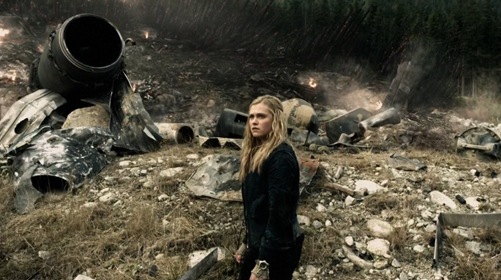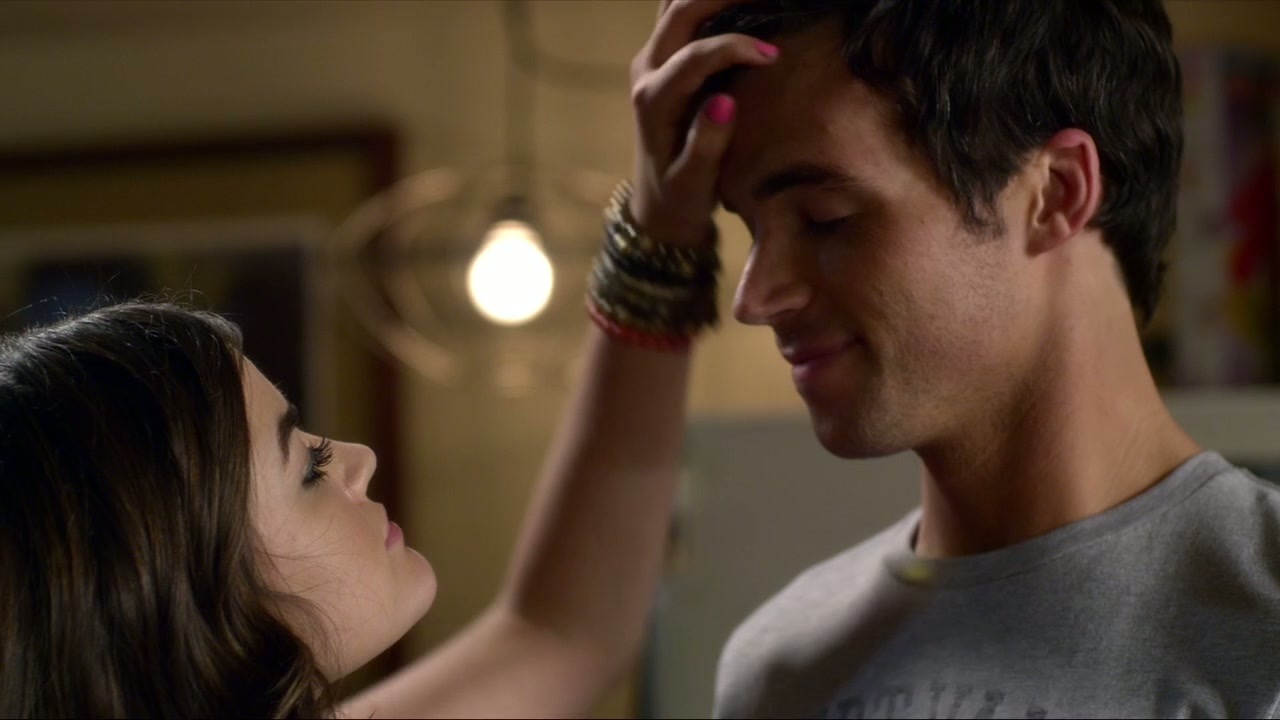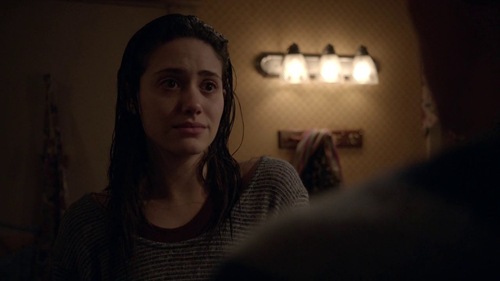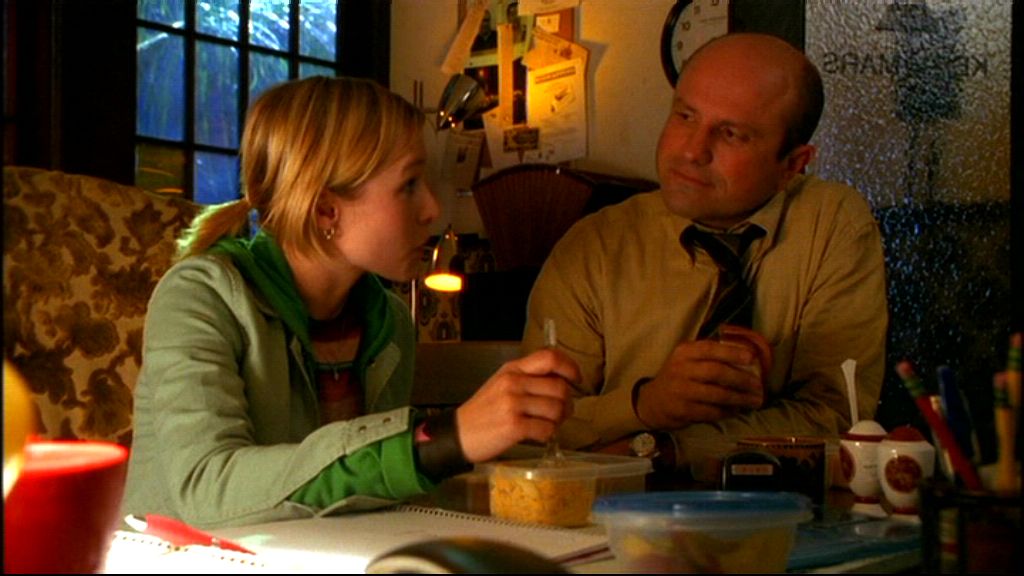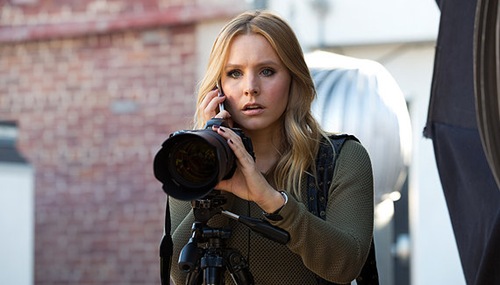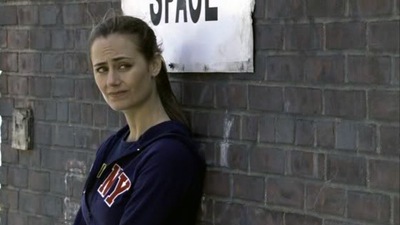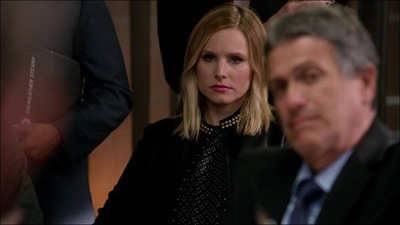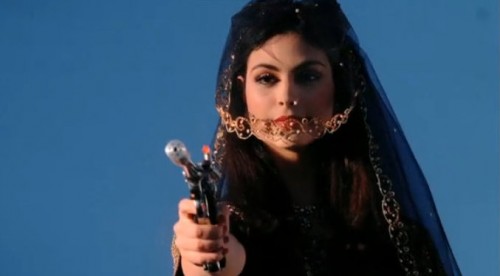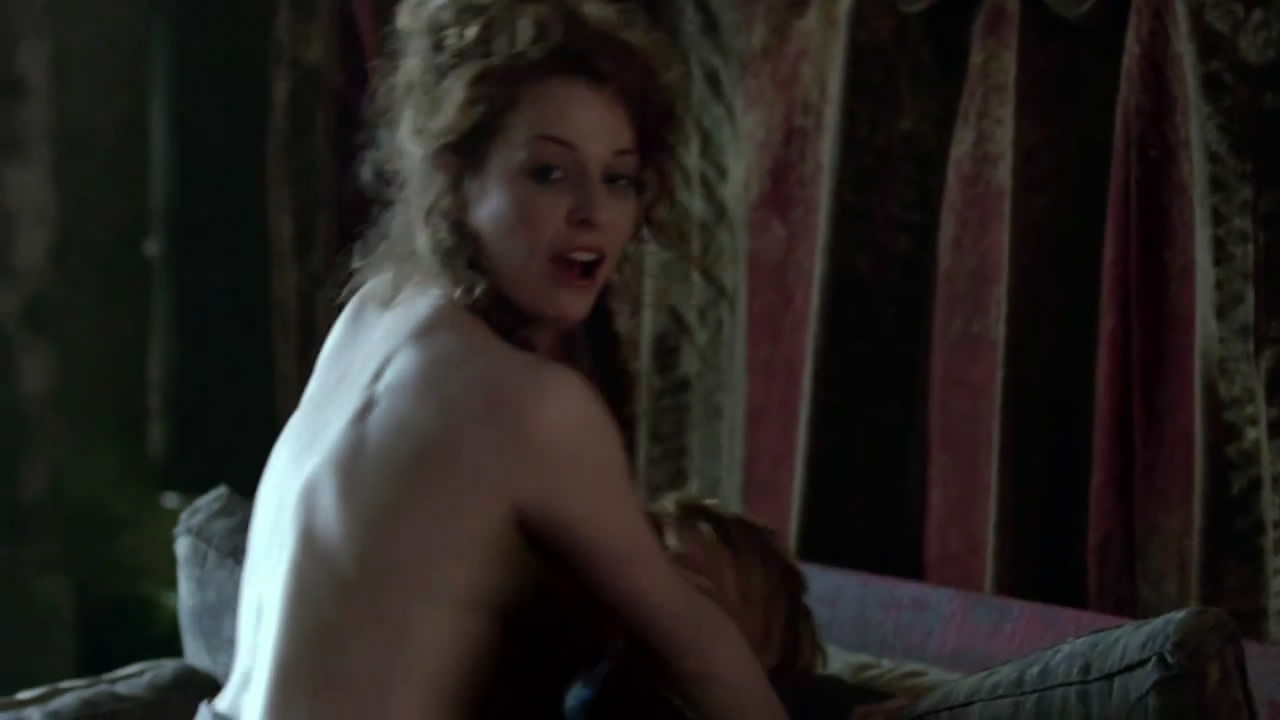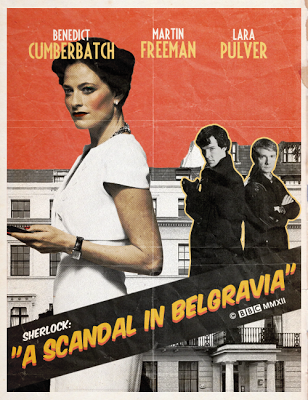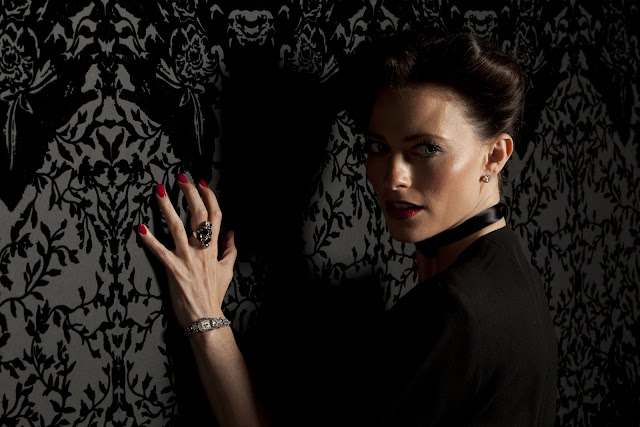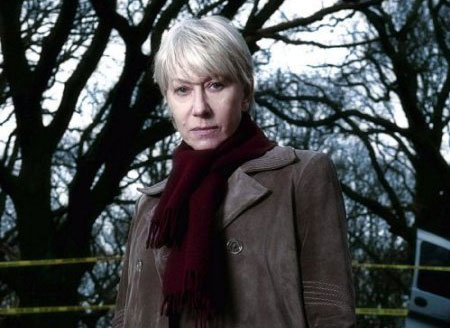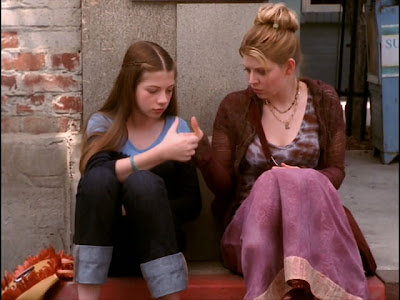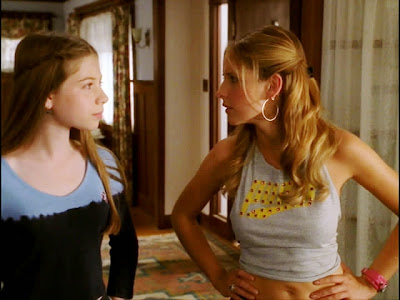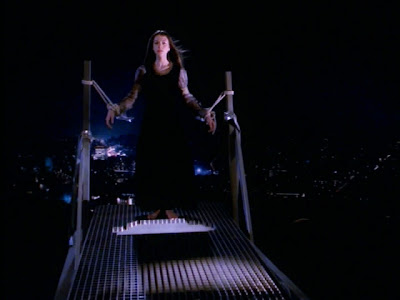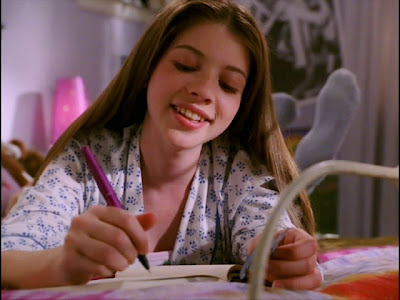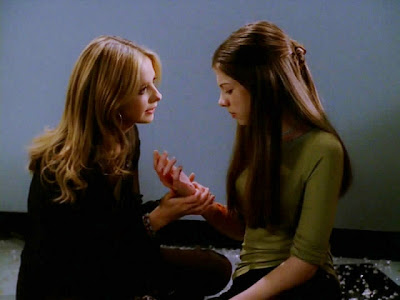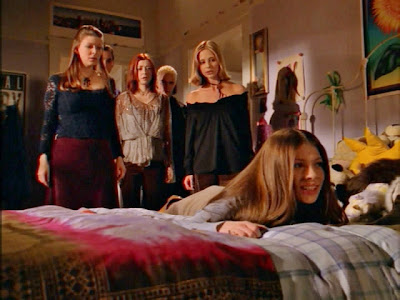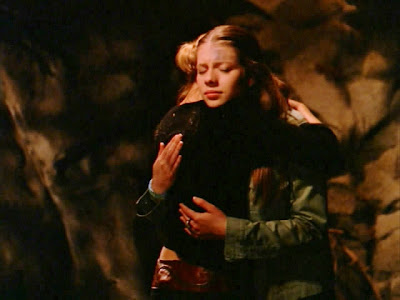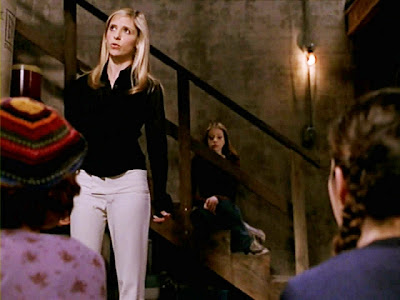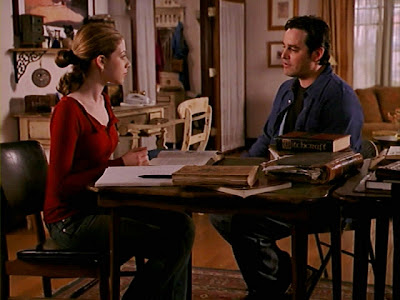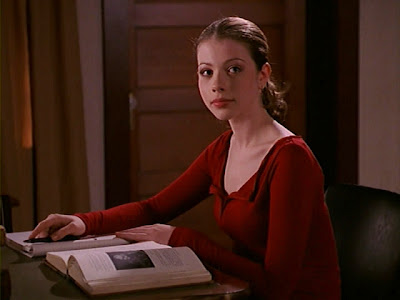Written by Katherine Murray.
The acting is poor, the dialogue is terrible, and the production values are low, but the first season of The 100 has its moments, and most of them are pretty effing dark.
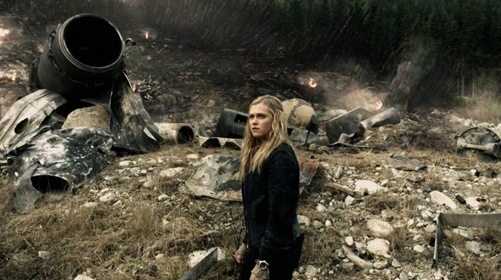
With the finale airing tonight, the CW is set to wrap up the first season of its post-apocalyptic YA series, The 100 . Based on a novel of the same name, the show takes place in the future, where humanity has been forced to live on space stations after destroying the Earth. Almost a century after the exodus, the crew of the last remaining station, The Ark, discovers that life support is failing and decides to send a team of one hundred twenty-something models teenage prisoners back to the planet, to determine whether it’s fit for colonization. Unfortunately, the prisoners immediately lose contact with the space station, leading each group to believe that it is alone, facing difficult choices about its survival.
The main character on the ground is Clarke, a political prisoner who’s basically the same serious, hyper-competent seventeen-year-old girl who stars in all post-apocalyptic YA fiction. Clarke knows a little bit about medicine, which makes her valuable to the group, but her main job is being right all the time and lecturing the others about why they are wrong. The group’s de-facto leader is an older boy named Bellamy, who snuck onto the transport ship because his sister was on board, and a lot of the tension early on comes from Clarke thinking the group should do one thing, and Bellamy thinking they should do something else.
The story on the space station is anchored by Clarke’s mother, Abby, who’s a doctor and sits on the governing council (mirroring Clarke almost exactly, but in a world of adults, rather than teenagers). Abby believes that Earth is habitable and keeps pushing for a wait-and-see approach, while other councillors want to start culling the population in order to extend life support. Her main adversary is the Vice Chancellor, Marcus, who argues (pretty persuasively) that, if Abby is wrong, then, the longer they wait, the more people will have to die.
There are thirteen episodes in the season, including tonight’s finale, and the premiere episode is rough. Rough, like it’s kind of painful to watch, and you think, “This is the worst show that I’ve ever seen.” The tone is all over the place, the actors look and sound like they feel really awkward, everything looks cheap, and the story is silly. The second episode, in all honesty, isn’t much better.
But, then the third episode happens and, it’s not that the show becomes good, but it becomes about a million percent better than it was, and it keeps it keeps improving from there.
The third episode of The 100, “Earth Kills,” does two important things. The first is that it displays honest emotion. Clarke’s backstory is that her father was the engineer who discovered the life support system was failing, and he was executed for trying to warn the population (Clarke was in solitary because she knew the secret). Her best friend, and the Chancellor’s son, Wells, is also on Earth with her, but they’re not really friends anymore because he’s the one who ratted her father out after she told him the plan. We know this already, but most of “Earth Kills” is taken up with flashbacks that dramatize these events in a much more visceral way. We see Clarke watching as her father gets sucked into space (the preferred method of execution on The Ark), and it’s horrible. It completely explains why she’s so mad at Wells and why everyone else who’s had a loved-one sucked out the airlock hates Wells’ father for pushing the button.
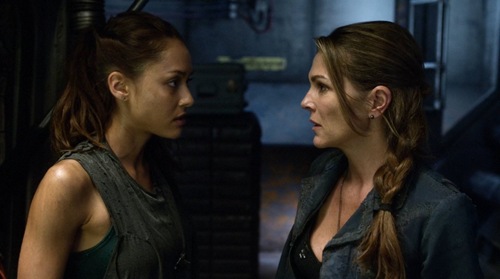
The second important thing “Earth Kills” does is end with a shocking, gruesome, grimdark twist that makes sense, given the emotional journey we’ve been on, but also establishes the tone of the show much more clearly. Because, despite the wacky hijinks in the first couple of episodes, The 100, once it gets going, is surprisingly dark for a network TV show.
I mean, William Golding understood in 1954 that, if a bunch of kids built a society, it wouldn’t be all bonfires and sparkly butterflies — I have no grounds to be surprised. Still, after the ridiculousness that was a Jaws-attack by a giant, invisible water snake in episode one (a scene that ends with everyone having a chuckle about it), I was not prepared for episode three, or episode five, or any episode where the series actually followed through on a threat and had something terrible happen.
It’s not that I think being shocking, and making your show a big downer automatically means that it’s good – in fact, I would still hesitate to say that The 100 ever actually gets good – but, The Hunger Games, and second-wave sci-fi, and the generally dark as hell turn that TV has taken in the last few years, have taught us that moral complexity requires a certain engagement with unpleasant content. I think we also may have reached the tipping point where it’s now a “safe” decision to include that in your show – where even a drama for the CW, staring insanely good-looking people who want to hook up, needs some violence, death, and torture, just to stay relevant.
I’m not being judgemental – I enjoyed this show a lot more, once it turned serious and dark. I’m just saying, I notice that a lot of pop culture is tilting that way, and I wonder what it means.
Setting aside the tone for a second, some other good things happen once the series gets going. To start with, the actors relax more into their roles. They forget to be embarrassed and, as they take themselves more seriously as penal colonists on a strange planet, it’s easier to suspend your disbelief. It’s also easier because the costuming and makeup departments are so good at making everyone look dirty.
You can tell that the series is based on a book, because there seems to be a plan as the action moves forward. The 100 throws a lot of twists and cliff-hangers our way – just as one problem is solved, it turns out there’s another – but, unlike other shows, where it feels like the writers are just trying things out, the plot in The 100 progresses more organically. One thing leads to another, and the stakes raise each time, building to the climax.
The characters are also allowed to disagree and still be likable. At the outset, it looks like Marcus is evil, but, once we get to know him, we see that, like everyone else, he’s trying to make good decisions in a bad situation. Similarly, we’re invited to like both Bellamy and Clarke, even though they often disagree with each other, and sometimes make the wrong move.
And, while this isn’t the first show I would point to for awesome portrayals of women, it does better than you’d expect.
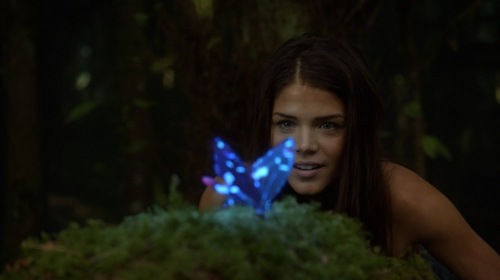
Even though Clarke is ripped straight from the pages of every YA novel ever, she’s a pretty decent heroine, and it’s nice that she and Abby serve as our entry points into this world. Whether or not we identify with Clarke, most of the major events on the ground are filtered through her point of view – she’s involved in all the major missions, she has a really loud opinion about everything, and we learn about this world and its characters at roughly the same pace she does. While she’s initially presented to us as an idealist (and a kind of a self-righteous one, at that), it’s interesting to see how she reacts as she’s forced to solve problems with no good solution.
There’s also a secondary character named Raven who’s introduced to us first as a mechanic, and only secondly as somebody’s girlfriend. Even though there’s some triangle drama happening with the character, the most important thing about Raven is that she’s smart and she knows how to build stuff. There’s even a nice scene where one of the boys tells her that they need her around for that reason. One of the most interesting relationships on the show is also between Raven and Abby, as they scheme together aboard The Ark.
On the flipside, there’s another character who’s more problematic.
Bellamy’s sister, Octavia, is initially presented as The Sexy One – an angry, outspoken, promiscuous girl who’s competing with Clarke for the affections of a boring boy named Finn. The first episode has this eye-rollingly bad scene where she gets undressed in front of everyone while they stare at her; in the second episode, she’s macking on three different dudes, partly just to rebel against Bellamy.
After the first couple of episodes, though, her personality does a 180, and she becomes Saint Octavia, a gentle and innocent soul, who’s annoying in a wholly different way. Saint Octavia literally trips over her own feet, at one point, and knocks herself out, necessitating a daring rescue. She also falls in love with a man who kidnaps her and chains her up in a cave. (Then she apologizes to him for freaking out when he chained her up in a cave – I’m not making this up).
Whereas the other characters are more active, the main point of Octavia is how other people feel about her – whether or not they’re attracted to her, how Bellamy structures his life to protect her, etc. In fact, the whole reason she’s named Octavia in the first place is because of how Bellamy relates to her – when she was born, he named her Octavia because Octavia was the Emperor’s sister, just as she is his.
Either version of Octavia is hard to take, but she’s an anomaly on a show that’s otherwise pretty balanced when it comes to gender. The characters who drive the action are just as likely to be male or female, and the show passes the Bechdel test pretty often, considering that it’s pre-occupied with heterosexual dating relationships.
If I had an award for “most improved show,” I think The 100 would win it. Most sci-fi series take a while to figure out what they’re trying to be, but the contrast between the first two episodes of The 100 and the rest of the season is pretty extreme. I’m actually excited to see the finale, and, since it’s already been picked up for a second season, I’m planning to tune in again.
Programming note to my fellow Canadians: Netflix Canada streams The 100 the day after it airs in the States.
Katherine Murray is a Toronto-based writer who yells about movies and TV on her blog.
